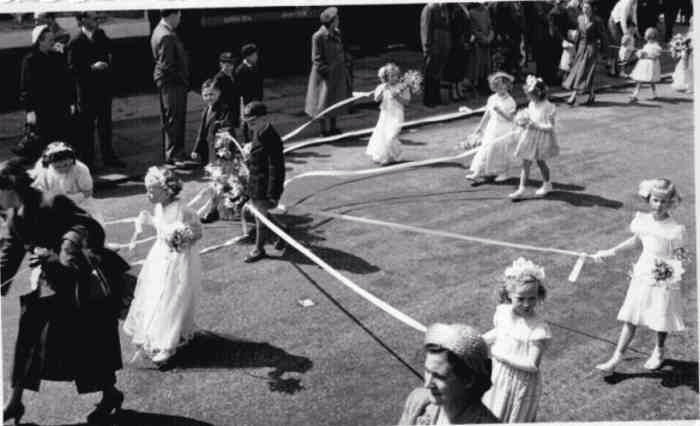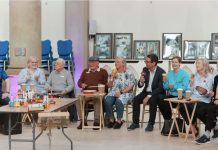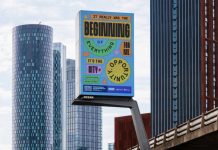We may think that social problems in the younger generation are a product of the twentieth century.However a new book looking at the history of Manchester’s Whit Walks suggests that the issue has its origins at the end of the eighteenth instead.
Canon Jim Burns retired from the church four years ago, having previously been a member of St Mary’s in Beswick and having been brought up in the tradition of the Walks decided to research their history.
For many of the older generation, Whit Friday was one of the most important days in the calendar. The traditional “Procession of Witness” would see each church or chapel marches in procession through the streets with local bands leading the processions.
Canon Burns dates their origins back to 1800 and the beginnings of the industrial revolution. Then children would be labouring for six days a week from four in the morning until six at night.On Sunday’s, the day of rest, they would relax by running wild. Gang fights, gin drinking and cock fighting were prevalent as was the lure of Whitsuntide of the Kersal races.
As a consequence, The Church of England Sunday school committee was formed, in part to keep them away from the races and decided to gather at St Ann’s Church in the centre of Manchester. Inter church rivalry intervened, the Collegiate church, now the Cathedral, taking exception to being excluded and as a compromise, it was decided that the children would assemble at St Ann’s and be led by a band to march to the Collegiate.
Thus a tradition was born. The first drew around eighteen hundred but the tradition grew quickly.By the late 1800’s over fifty thousand people with more than one hundred bands would take three and a half hours to complete.
St Ann’s could no longer contain them and the start of the procession moved to Albert Square. The Catholic Church joined, their procession would walk to Piccadilly where the bishop of Salford would bless them and people would gather along Market Street from six in the morning in order to get a good view.
Canon Burns tells of the tradition of the march.These were the working classes of the town who lived in the back to back houses and worked long hours. The Sunday schools were the only places of education and the Whitsuntide festival relieved them of the monotony of working class life.
Whit week became a festival week.The churches would organize excursions to the seaside and the countryside.In the evening dances would be organized in the church halls and on the Sunday of the Whit Week, the walks would take place around the parish and afterwards the marchers would be given cherry buns and milk.
Children would be given new clothes. After church, Canon Burns says, you would go round your relatives and show off your new outfit before partaking in the family tea.On the Monday, you would rise early and in another set of new clothes, march to Albert Square. People referred to it as the most magical of experiences.
As society changed in the second half of the twentieth century and the inner city churches began to close, the walks fell out of favour.They continue most strongly around Saddleworth but today, the original march from St Ann’s to the Cathedral continues and last year it was attended by eighteen hundred people, the same amount that turned out for the first walk, two hundred and fourteen years ago.
The history and memories of the Whit Walks in and around Manchester can be ordered by getting in touch with the Rev Canon Jim Burns at 7. Devon Drive. Diggle Ol3 5PP The book is priced at £14.95







